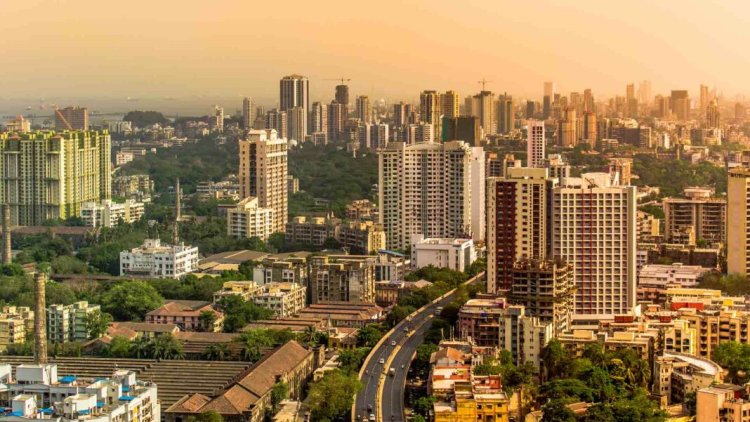Cost Breakdown of Leasing Office in a Business Park
Share this Post to earn Money ( Upto ₹100 per 1000 Views )

Leasing office space in a business park can be a smart investment for businesses seeking a professional, amenity-rich environment. However, before signing a lease, it's crucial to understand the complete cost structure involved. Unlike standalone commercial properties, leasing in a business park includes various direct and indirect costs that affect your overall budget.
Here’s a detailed breakdown of the costs associated with leasing office space in a business park to help you make an informed financial decision.
1. Base Rent
The base rent is the fixed amount you pay for occupying the office space. It is usually calculated on a per square foot or per square meter basis.
Key considerations:
- Varies based on location, floor, view, and building amenities.
- Prime business parks in metropolitan cities tend to have higher rental rates.
- Long-term leases may offer slightly reduced rates compared to short-term leases.
Example: If the base rent is ₹100 per sq. ft. for a 2,000 sq. ft. office, your monthly rent would be ₹2,00,000.
2. Common Area Maintenance (CAM) Charges
Common Area Maintenance charges cover the cost of maintaining shared spaces such as lobbies, elevators, corridors, restrooms, parking areas, and landscaped zones.
Includes:
- Housekeeping
- Repairs and maintenance
- Security services
- Utility costs for common areas
CAM charges are typically calculated as a percentage of the base rent or per square foot. It’s important to check how these charges are apportioned and whether they’re capped annually.
3. Security Deposit
Landlords usually require a security deposit as a safeguard against potential damages or lease violations. This is a refundable amount, provided there are no issues at the end of the lease term.
Typical requirement:
- 3 to 6 months’ worth of rent
- Can be negotiable depending on lease duration or tenant profile
Make sure the lease agreement clearly states the terms for deposit refund.
4. Advance Rent
In addition to the security deposit, tenants may be required to pay advance rent, typically for one to three months. This acts as a buffer for the landlord and is adjusted against future rent payments.
5. Utility Costs
While common area utilities may be included in CAM, tenants are usually responsible for:
- Electricity usage within their office
- Water consumption (if metered separately)
- Internet and telecommunication services
In modern business parks, these are often provided on a pay-as-you-go basis, and costs can vary depending on usage patterns and service providers.
6. Fit-Out Costs
Unless you're leasing a fully furnished or plug-and-play office, you'll need to budget for fit-outs and interior customizations.
Includes:
- Furniture and fixtures
- Lighting and electrical work
- HVAC system upgrades
- IT infrastructure (LAN cabling, server rooms, etc.)
- Branding and signage
Fit-out costs can range from ₹1,000 to ₹3,000 per sq. ft. or more, depending on the quality and customization level. Some landlords offer a fit-out allowance or partner with vendors to reduce this burden.
7. Maintenance and Repairs (Within the Premises)
While the landlord typically handles maintenance of common areas, tenants are responsible for:
- Internal electrical and plumbing repairs
- Air conditioning servicing
- Cleaning services inside the leased space
These recurring costs should be factored into your monthly operating budget.
8. Property Taxes and Insurance
In most cases, property taxes are paid by the landlord, but in some lease structures (especially triple net leases), a portion may be passed on to the tenant.
You may also be required to:
- Take insurance for the office contents and public liability
- Share in building insurance premiums depending on the lease terms
Always review the lease agreement for clarity on these obligations.
9. Parking Charges
Some business parks charge separately for designated parking spaces, especially in high-demand areas.
Options include:
- Reserved parking (premium pricing)
- Unreserved/shared parking (lower cost)
- Visitor parking (may be free or pay-per-use)
The number of spaces allotted can also affect your rental decision, especially for larger teams.
10. Legal and Administrative Fees
While often overlooked, there are also costs related to:
- Stamp duty and registration of the lease agreement
- Legal consultation fees if you're having the lease reviewed by a lawyer
- Brokerage charges, if applicable (usually one month’s rent)
Conclusion
Leasing an office in a business park goes beyond just paying rent. From fit-outs to CAM charges, utility bills to legal fees, a full financial analysis is essential to understand the true cost of occupancy.
Here’s a quick summary checklist:
|
Cost Component |
Estimated Frequency |
|
Base Rent |
Monthly |
|
CAM Charges |
Monthly |
|
Security Deposit |
One-time (refundable) |
|
Advance Rent |
One-time (adjustable) |
|
Utilities |
Monthly |
|
Fit-Outs |
One-time (initial setup) |
|
Maintenance (internal) |
Recurring |
|
Taxes and Insurance |
Annual/As per agreement |
|
Parking |
Monthly or annual |
|
Legal/Brokerage Fees |
One-time |
By understanding these components in detail, you can negotiate better terms, avoid unexpected expenses, and ensure your chosen office space supports your financial and operational goals.















